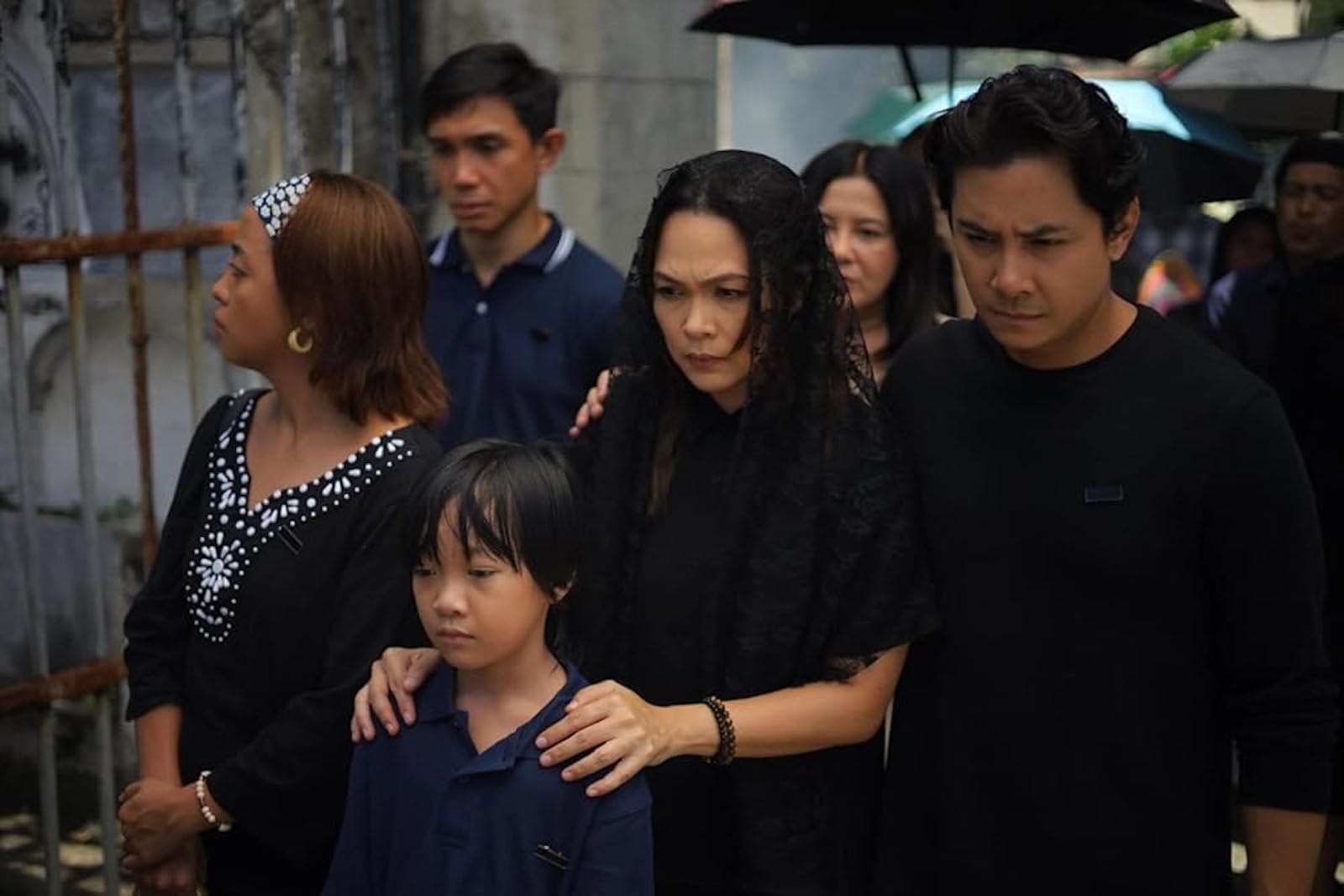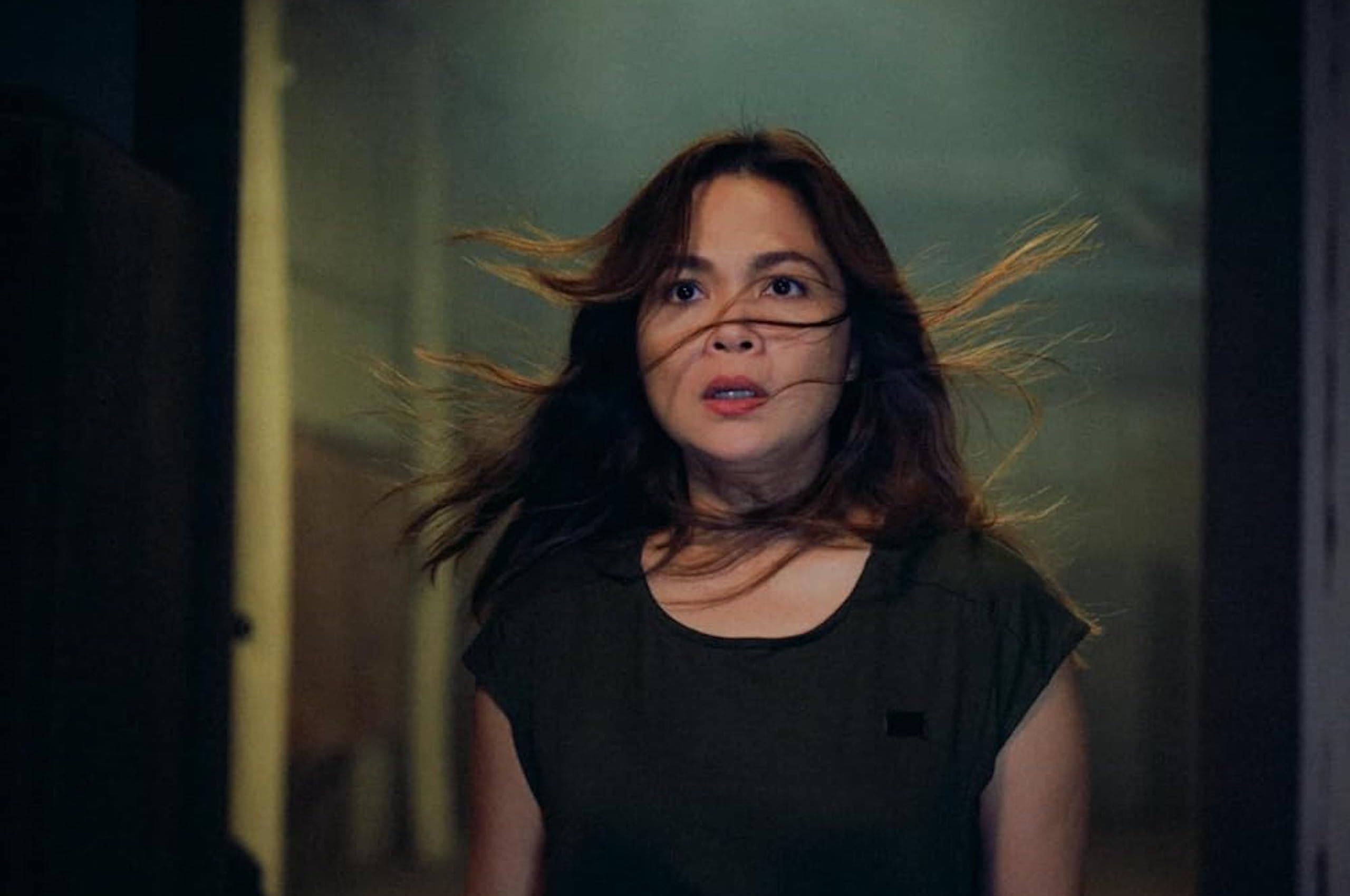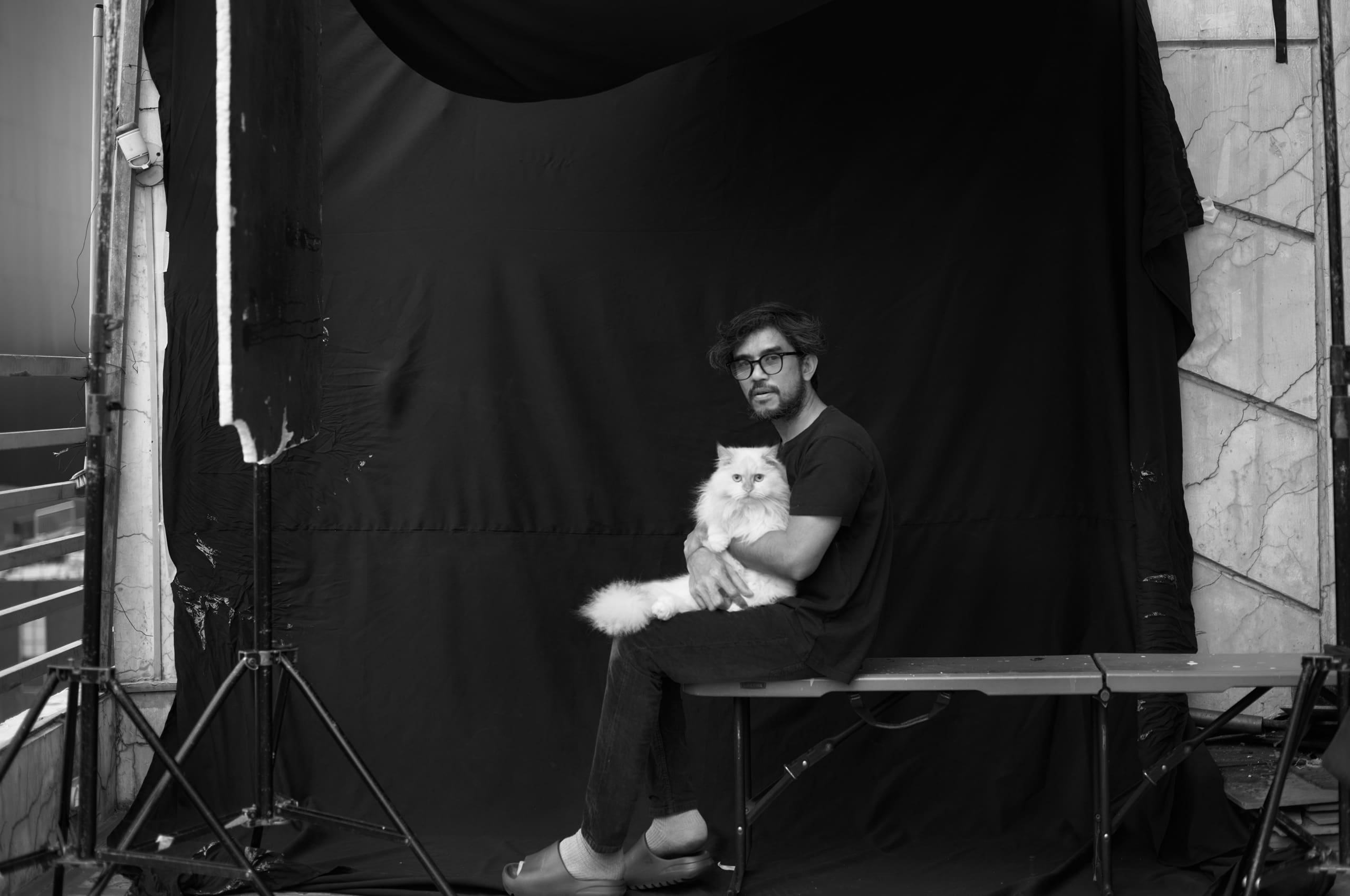There are movies that make us suffer by draining all life and feeling from our souls, and there are movies that make us suffer joyously. The latter might be said of Chito Roño’s latest horror offering, Espantaho, an entry to the 50th Metro Manila Film Festival (MMFF). This is the same festival where he won best director twice: first for Nasaan ang Puso? in 1997, then for Yamashita: The Tiger’s Treasure in 2001.
The narrative centers on Monet (Judy Ann Santos), who oversees a nine-day mourning vigil, locally known as pasiyam, for the demise of the family patriarch Pabling (Emil Sandoval), whose first family, led by the presumptuous matriarch Adele (Chanda Romero), is returning to town to speed up the selling of the antiquated house and all remaining properties. Tagging along with Monet, who suffers from epileptic seizures and ominous visions, is the ghostly presence of her mother Rosa (Lorna Tolentino). Upon the arrival of an antique painting and the protagonist’s husband Jack (JC Santos) going on a business trip, marital tensions uncoil and bodies begin to disappear, only leaving dried grain stalks as a trace.

A Pull of Strings
In Roño’s previous pictures – from Patayin sa Sindak si Barbara (Tolentino’s last horror film project) to The Healing (starring Vilma Santos, who was supposed to play Tolentino’s part in Espantaho) – the feminist politics was rendered writ large. In them, the supernatural horror, often in the form of a curse, is harnessed through domestic and marital conflicts endured by female characters. The director summons a similar thematic infrastructure in this haunted house horror, which to some extent leads to a sober portrait of solidarity among its women.
However, the story’s coda doesn’t emerge in step with the horror that the movie peddles as Roño and writer Chris Martinez, who wrote and worked on Sukob together, favor a plotting that services the melodrama and its unlikely comedic appeal above anything else. The structure functions like a mosaic as editor Benjo Ferrer leaps waywardly from one scene to the next, forgoing any virtue of rhythm. The viewer can practically feel the pulling of the strings — from the tilting of the camera to the forceful harnessing of the sinister score. In doing so, the movie winds up as rushed, instead of propulsive; the images constructed, instead of perceived.
It doesn’t take an art connoisseur to discern that Martinez invokes names of painters and paintings as a motif in the film: from the French impressionist Oscar-Claude Monet (though “Monet” is pronounced differently here), to Mexican icon Frida Kahlo (Donna Cariaga’s character), to master animalier Rosa Bonheur, and to Gustav Klimt’s Portrait of Adele Bloch-Bauer I. One might even argue that the lore behind the cursed painting — an artist obsessed with his muse — is an homage to storied lives in the art world. Here, albeit to a sickening degree, Tolentino’s Rosa is to Archie Adamos’ Sylvio Madamba as Dora Maar is to Pablo Picasso.
The titular force of evil, which appears as a scarecrow in the doomed artwork and essentially exists as a grim reaper, attacks through pestilence of many sorts: locusts, leeches, worms, rats. But when the first kill is done, the viewer can barely feel a character’s grief, as though the strange occurrence is routine. Then the narrative proceeds mindlessly to the next victim, bloating, again, the melodrama rather than the suspense and danger embodied by the paranormal threat.
Near-Camp Hilarity
What further prohibits the horror from motoring forward is that the movie tries to be so completist in terms of unraveling its provenance. It explains the backstory at great length, though still in a thorny, perpetually ludicrous way, suffused with torrents of coincidences and typical deus ex machina, including an encounter with an occultist (Eugene Domingo).
At some point, the viewer cannot help but simply give in to the movie’s absurd, maybe even unintentional, near-camp hilarity. Then again, the script is written by Martinez, of comedies like Kimmy Dora, Here Comes the Bride, Ang Babae sa Septic Tank, and The Gifted. The acting heightens such occasional tonal shifts as the performances of the central trio veer into the bewildering and seriously unserious, situated smack dab in a string of heated head-to-head scenes which Martinez furnishes with some lively, though trite, dialogue.
The movie’s misdirected energy is a pleasure to watch, but it is clearly split by faction. Roño follows one route, Martinez pursues another. The outcome is a talky picture that might have a lot to say about womanhood, docility, domestic life, and the patriarchy, but doesn’t really cohere into a vivid visual lexicon. It is a horror haunted by the contrivances and artistic impulses it houses. It is hollow like a scarecrow.
‘Espantaho’ runs at the 50th Metro Manila Film Festival until January 14.





